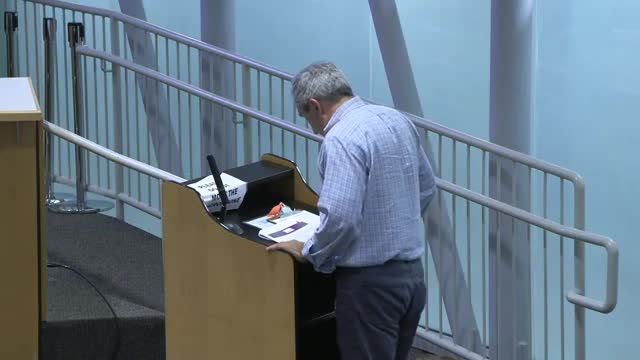Traffic Concerns Rise Over New Chick Fil A Location
September 12, 2024 | Waukegan, DuPage County, Illinois
This article was created by AI summarizing key points discussed. AI makes mistakes, so for full details and context, please refer to the video of the full meeting. Please report any errors so we can fix them. Report an error »

During a recent government meeting, concerns were raised regarding the traffic implications of a proposed Chick-fil-A location in Waukegan. A local business representative expressed skepticism about the accuracy of the traffic studies presented, suggesting that the anticipated volume of 500 cars per hour may not fully account for the actual traffic patterns in the area. He emphasized that the intersection is already busy and that the new restaurant could attract additional traffic that the studies did not consider.
The representative urged board members to observe the traffic conditions firsthand during peak hours, highlighting the potential for increased congestion and safety risks for both employees and customers. He specifically pointed out the likelihood of cars looping through their parking lot if drivers miss the entrance or exit to the Chick-fil-A.
In response, a traffic analyst defended the study's methodology, explaining that traffic counts were conducted during peak hours and that the analysis included projections for the Chick-fil-A's impact. The analyst stated that the study accounted for \"pass-by traffic,\" which refers to drivers who might decide to stop at the restaurant while en route to another destination. He assured the board that the projected increase in traffic queues would be minimal, estimating only a rise of one or two vehicles during peak times.
The discussion also touched on the directional flow of traffic exiting the Chick-fil-A, with the analyst confirming that the study had evaluated how vehicles would navigate the surrounding roads. He noted that the traffic distribution was based on existing patterns, projecting that 40% of customers would head north and another 40% south on Waukegan Road.
Despite the reassurances from the traffic analyst, the local business representative remained concerned about the potential for increased traffic and safety hazards, urging the board to consider the real-world implications of the proposed development. The meeting underscored the ongoing dialogue between local businesses, traffic experts, and government officials as they navigate the complexities of urban planning and community safety.
The representative urged board members to observe the traffic conditions firsthand during peak hours, highlighting the potential for increased congestion and safety risks for both employees and customers. He specifically pointed out the likelihood of cars looping through their parking lot if drivers miss the entrance or exit to the Chick-fil-A.
In response, a traffic analyst defended the study's methodology, explaining that traffic counts were conducted during peak hours and that the analysis included projections for the Chick-fil-A's impact. The analyst stated that the study accounted for \"pass-by traffic,\" which refers to drivers who might decide to stop at the restaurant while en route to another destination. He assured the board that the projected increase in traffic queues would be minimal, estimating only a rise of one or two vehicles during peak times.
The discussion also touched on the directional flow of traffic exiting the Chick-fil-A, with the analyst confirming that the study had evaluated how vehicles would navigate the surrounding roads. He noted that the traffic distribution was based on existing patterns, projecting that 40% of customers would head north and another 40% south on Waukegan Road.
Despite the reassurances from the traffic analyst, the local business representative remained concerned about the potential for increased traffic and safety hazards, urging the board to consider the real-world implications of the proposed development. The meeting underscored the ongoing dialogue between local businesses, traffic experts, and government officials as they navigate the complexities of urban planning and community safety.
View full meeting
This article is based on a recent meeting—watch the full video and explore the complete transcript for deeper insights into the discussion.
View full meeting
